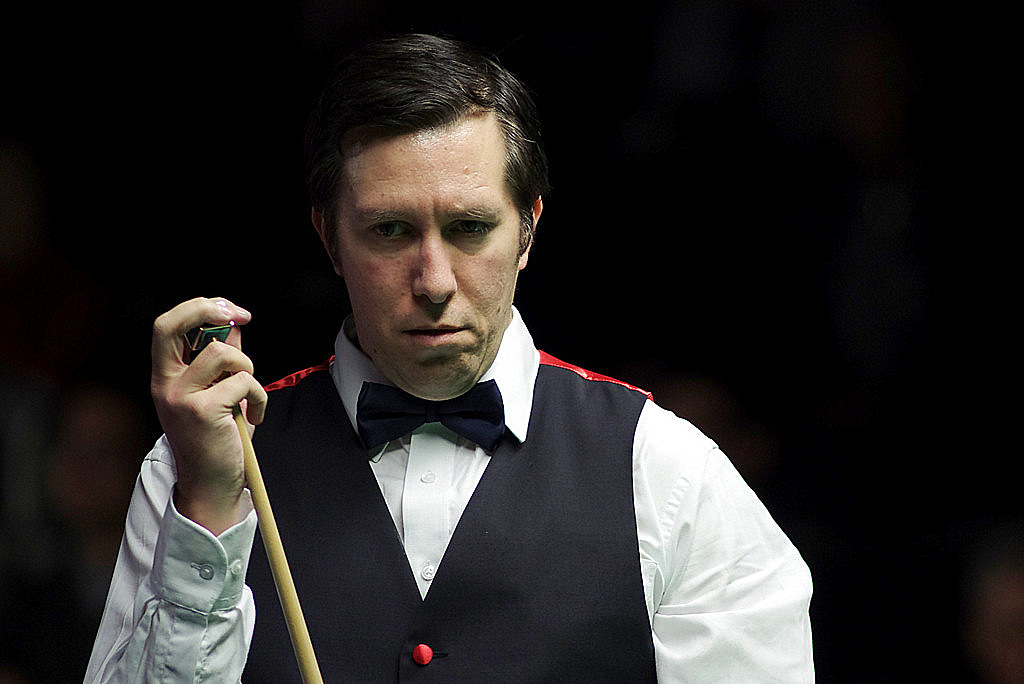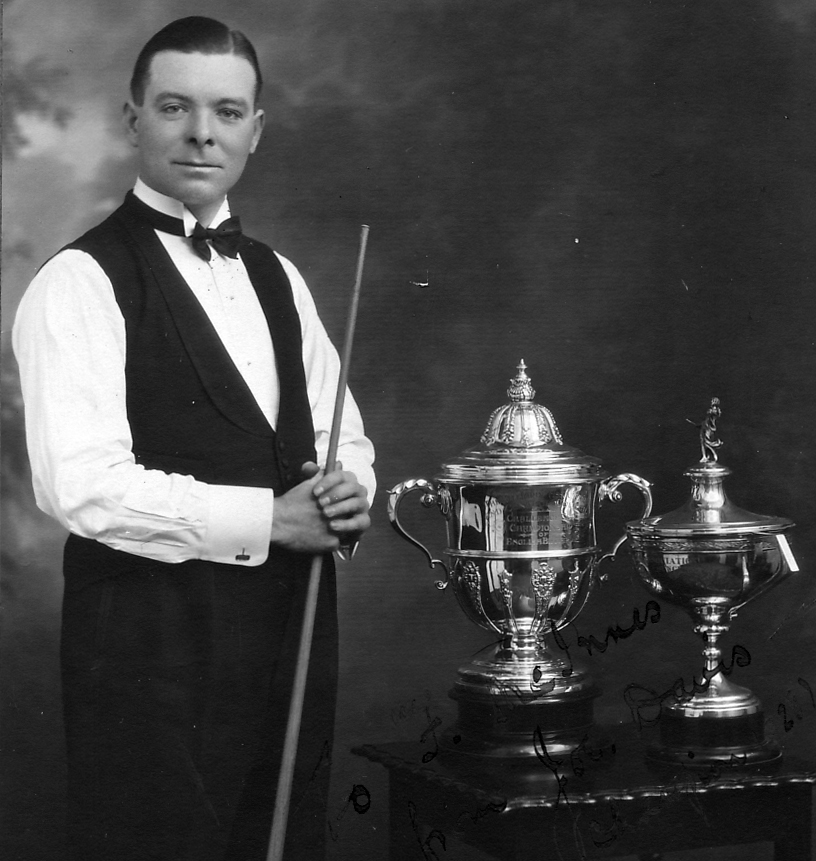Cue History
 Former Shanghai Masters champion Dominic Dale is one of snooker’s most knowledgeable historians.
Former Shanghai Masters champion Dominic Dale is one of snooker’s most knowledgeable historians.
As an avid collector of antique cues he’s been looking at their evolution and taking a glance forward to potential technological advancements, for anyone brave enough to embrace them…
Early Billiards and The Mace
In 18th century France, early versions of billiards were played. One of them was called fortification billiards, which involved little lead huts, bells, hoops and kingpins. Played on pocketless tables, it was very much like an indoor version of croquet, incidentally the cloth was made green to emulate grass. In Britain we also played forms of billiards with items like croquet hoops on a pocketless table.
The hitting implement used in these games was called a mace, similarly shaped to a croquet mallet. It was vastly different to the modern day cue, but would provide an evolutionary starting point.
The mace was originally a single piece of timber, often with a leather or ivory terminal and would be curved at one end to facilitate ball striking. With the mace trailed above the shoulder, the balls would be rather pushed along the table using the curved end of the mace. That was a legal stroke at the time, but under today’s rules it would be considered the push shot of all push shots. You were incredibly limited in the kinds of shots you could play and should the cue ball finish near a cushion rail, ball striking would become severely impeded.
Initial transitions to the mace came at the end of the 18th century to the beginning of the 19th century. Maces would then be constructed in two sections. A very thin length of dowel (usually pitch pine) would have a wooden rectangular block fitted at the opposite end. It didn’t take too long before a sighting line (in Ebony or Satinwood) would be added, in a similar way putters in golf have an alignment aid.
The thin end of the mace would often be used only when the ball was up against a cushion. Certain players soon realised though, that if they twisted the thin end of the mace into the whitewashed walls it would provide for some adherence making mis-cues less frequent, much in the same manner as we use chalk nowadays. It would not be too long before players realised that using the thin end of the mace would afford much more opportunity to play an increasing variety of shots.
From Mace to Cue
In 1807, a French infantry officer Captain François Mingaud was serving time in a debtors prison in Paris, mainly due to gambling debts. Whilst imprisoned, he experimented with a leather tip which he cut from a horse’s saddle and placed onto the thin end of the mace. Over 200 years later we are still using leather tips.
By now the mace more closely resembled what we now call the modern cue. It would be a single piece of timber, very thick at the butt end (sometimes with a sighting line) with a long flat section so that both ends of the mace/cue could be used and with a tip diameter of around 14mm. These are known today as transitional maces.
In the 1840s an Englishman named John Carr, who played at Bartley’s Billiards Rooms in Bath, began cutting pieces of ordinary chalk into blocks. Claiming it to have special qualities and naming it ‘Twisting Chalk’, he would sell it to all and sundry. Twist was the old word for what we now call side. Clearly with chalk being applied to a leather tip we are starting to get closer to the modern understanding of a cue.
Billiards players became more skilled and technique was improving. The transitional mace started to be phased out by the mid 19th century, and soon after this cues with leather tips became the norm. The brass ferrules we see on cues today didn’t really exist until the early 1920s. Some late Victorian cues did have horn or ivory ferrules but otherwise no ferrule at all.
By the early 1920s billiards was being played at levels never witnessed before, but a decade later players were so proficient at the game with their repetitive scoring methods that they began to kill billiards as a public entertainment. Because of this, snooker was beginning to gain in popularity.

Joe Davis with the World Championship trophies for snooker and billiards
Davis and the Snooker Cue
Joe Davis was a great billiards player and a four-time World Champion. He helped to instigate the first snooker World Championship in 1927 and bought the trophy which is used today, he went on to win the title 15 times.
Davis was the first player to realise that technique needed in snooker was very different to that of billiards. Snooker was all about potting and cue ball control and required the use of stun and screw far more frequently, therefore the springier cues used in billiards at the time were not appropriate.
Billiards cues were usually 58 inches long. He realised a shorter cue was more suitable, it allowed for more compactness. He said in his book, ‘How I Play Snooker’ (1949) that a cue should be as “stiff as can be at the weight you fancy”.
The cues in billiards tended to be rather whippy for making canons all around the table, but that wasn’t helpful in snooker. A stronger, shorter and more rigid cue was the order of the day. Davis himself used a cue that was only 55 inches long.
The Future
If you look at the world of nine-ball pool there have been lots more technological advancements in things like ferrule material and cue taper than there have been in in snooker. They would never use a brass ferrule, they use a phenolic resin instead. This is to eliminate ball throw/deflection when using side.
Pool players look into ball throw in terms of the taper of the cue. Throw can be explained visually, if you place a circular or spherical object on a table and push it with your index finger on the left hand side, it will be pushed to the right (due to mass) and vice versa. The taper of an American pool cue often remains the same for the first eight to fourteen inches from the ferrule before tapering down towards the butt end. It must be noted that American pool balls are significantly bigger to those used in snooker.
I don’t really know why we still use brass ferules in snooker. I think players are so used to it now that it would be a herculean task to adapt to the American style ferrule. The only current exception to this that I can think of is Peter Ebdon. He has been using a fibre ferrule for several years now.
Something else which I struggle to understand is why we are still using wooden cues. There are so many resin composites being manufactured nowadays. If you look at the evolution of the golf club, they began with hickory and greenheart shafts and now are made with graphite and carbon fibre etc. Similarly, in tennis racquets, they were also made of timber and they too are now made from carbon fibre.
If these composite materials are completely consistent in weight and density, it stands to reason that should a cue made from this material be lost or stolen, then it would be a simple task to replace it like for like. Such can never be said of a wooden cue, which will always have inherent subtle differences in both weight and density.
I think, generally speaking, that we are quite stuck in our ways with cue technology. I do not foresee any major changes, certainly not in my generation anyway.
Article originally published by WST in April 2020.